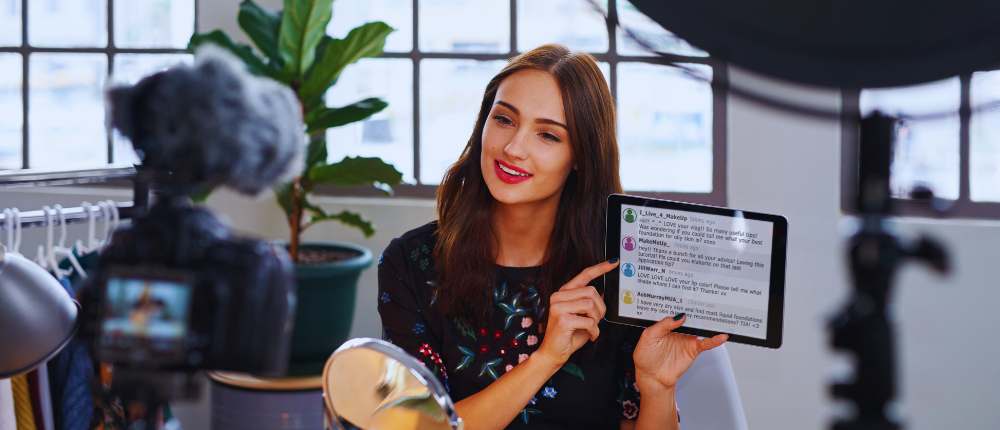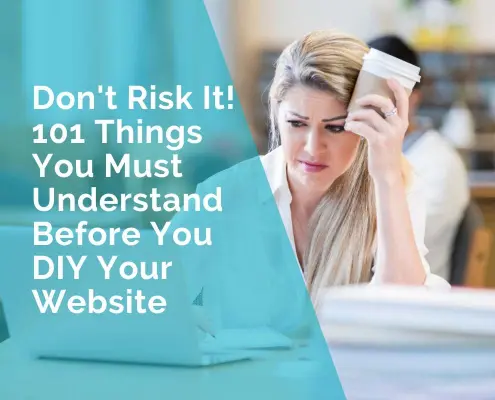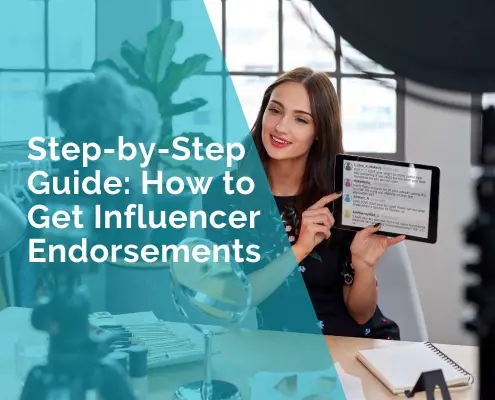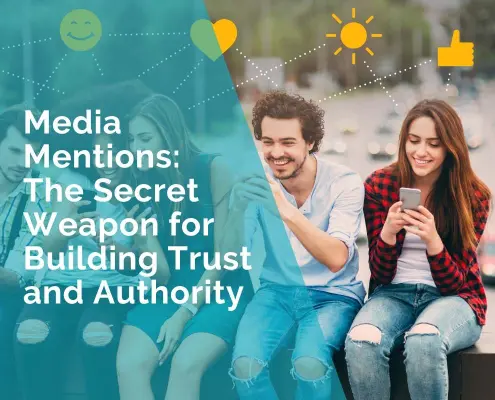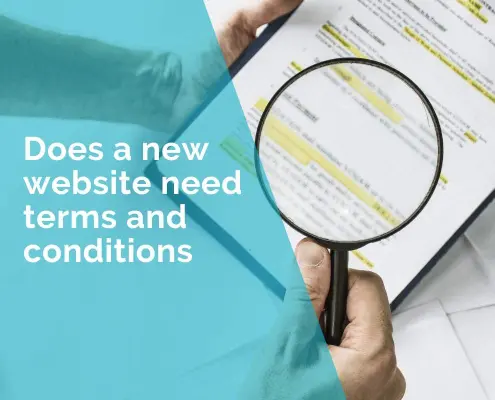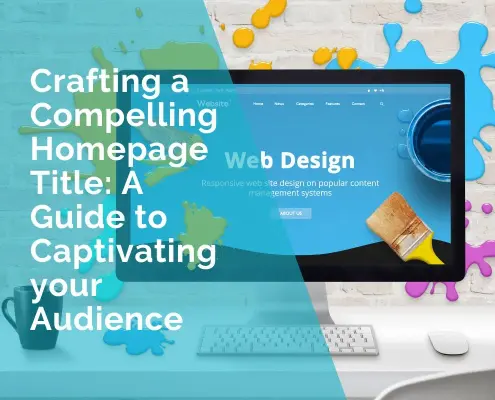Step-by-Step Guide: How to Get Influencer Endorsements
Influencer endorsements involve collaborating with individuals who have a significant following on social media platforms to promote your brand or product. These influencers, through their authenticity and influence, can sway the purchasing decisions of their followers.
Influencer endorsements offer several benefits, including increased brand visibility, credibility, and engagement. By partnering with influencers who resonate with your target audience, you can expand your reach and connect with potential customers in a more authentic and relatable way.
For example, a skincare brand might collaborate with a beauty influencer known for sharing skincare routines and product reviews. By having the influencer endorse their products, the brand gains access to their followers, who are likely interested in skincare products and are more likely to trust recommendations from someone they admire and follow. Similarly, a fitness apparel brand could partner with a popular fitness influencer to showcase their products in workout routines and fitness challenges, reaching a highly engaged audience interested in health and fitness.
Step 1: Understanding Your Brand and Audience
Defining your brand identity and values
Before reaching out to influencers, it’s crucial to have a clear understanding of your brand identity and values. What makes your brand unique? What do you stand for?
Take, for instance, a sustainable fashion brand that prioritizes eco-friendly materials and ethical production practices. By defining your brand identity as eco-conscious and socially responsible, you can attract influencers who share similar values and resonate with your brand’s mission. This alignment ensures that influencer endorsements feel authentic and genuine, strengthening your brand’s reputation among environmentally conscious consumers.
Identifying your target audience and their preferred platforms
Knowing your target audience is essential for effective influencer marketing. Who are your ideal customers, and where do they spend their time online? For example, if you’re a gaming accessories company targeting young gamers, platforms like Twitch and YouTube might be more effective for reaching your audience compared to LinkedIn or Facebook.
Understanding your audience’s preferences enables you to identify influencers who have a strong presence on the platforms where your target demographic is most active. This targeted approach ensures that your influencer marketing efforts are reaching the right audience with the highest potential for engagement and conversion.
Researching relevant influencers aligned with your brand and audience
Once you’ve defined your brand identity and identified your target audience, it’s time to research influencers who align with your brand values and resonate with your audience. For instance, if you’re a pet food company targeting pet owners interested in natural and organic products, you might look for influencers who specialize in pet care and advocate for holistic pet nutrition. By collaborating with influencers who share your brand’s values and cater to your target audience, you can create authentic and meaningful partnerships that drive engagement and foster brand loyalty.
Step 2: Setting Clear Objectives and Goals
Establishing measurable goals for your influencer marketing campaign
Before diving into influencer marketing, it’s crucial to establish clear and measurable goals for your campaign. These goals should align with your broader marketing objectives and reflect what you hope to achieve through influencer endorsements. For example, if you’re a fashion brand launching a new product line, your goal might be to increase brand awareness and drive sales. If you’re a travel agency aiming to attract more customers, your goal could be to generate leads and bookings through influencer partnerships. By defining specific goals, you can track progress and evaluate the success of your campaign effectively.
Determining key performance indicators (KPIs) to track success
Once you’ve established your goals, it’s essential to determine the key performance indicators (KPIs) that will help you measure success. These KPIs should align with your goals and provide actionable insights into your campaign’s performance. For instance, if your goal is to increase brand awareness, KPIs could include reach, impressions, and engagement rates. If your goal is to drive sales, KPIs might include click-through rates, conversion rates, and return on investment (ROI). By tracking these metrics, you can assess the effectiveness of your influencer marketing efforts and make data-driven decisions to optimize future campaigns.
Aligning objectives with broader marketing strategies and business goals
It’s essential to align your influencer marketing objectives with your broader marketing strategies and overall business goals. Your influencer campaigns should complement and reinforce your existing marketing initiatives, contributing to the achievement of larger business objectives. For example, if your business goal is to expand into new markets, your influencer marketing strategy could focus on targeting influencers with a strong presence in those markets. If your marketing strategy emphasizes building brand loyalty, your influencer campaigns could focus on fostering authentic connections with your audience. By ensuring alignment across all levels of your marketing efforts, you can maximize the impact of your influencer endorsements and drive meaningful results for your business.
Step 3: Crafting Compelling Outreach Strategies
Personalizing outreach messages to influencers
When reaching out to influencers, personalization is key. A generic message won’t stand out, but a tailored approach will. Take time to learn about the influencer, their content, and their values. For example, if you’re a travel agency reaching out to a travel blogger, mention specific posts you enjoyed and explain why your travel packages would be a perfect fit for their adventures. Show that you appreciate their work and believe in a genuine partnership. This personal touch can make a big difference in getting a positive response.
Highlighting mutual benefits and value propositions
Influencers want to know what’s in it for them. Clearly outline the mutual benefits of collaborating. For instance, if you run a fitness brand, explain how your high-quality activewear can enhance their workouts and appeal to their fitness-focused followers. Offer exclusive discounts for their audience, which can increase their engagement and boost their credibility. Highlighting these mutual benefits shows that you value the influencer’s contribution and are committed to a win-win partnership.
Leveraging creative and engaging content ideas to capture attention
Creativity can set your outreach apart. Propose unique content ideas that align with the influencer’s style and your brand message. For example, if you’re a tech company, suggest a tech influencer review your latest gadget in a fun, unboxing video or host a live Q&A session to engage their audience. If you’re a food brand, collaborate with a food blogger to create new recipes using your products. Offering creative and engaging content ideas not only captures the influencer’s attention but also shows that you’re invested in creating meaningful and appealing content for their followers.
Here’s an example of an outreach message:
Subject: Exciting Collaboration Opportunity with [Your Brand Name]
Hi [Influencer’s First Name],
I hope this message finds you well. My name is [Your Name], and I’m the [Your Position] at [Your Brand Name]. I’ve been following your journey and truly admire your content, especially your recent post about [specific post/topic]. Your dedication to [influencer’s niche or interest] really resonates with us at [Your Brand Name].
At [Your Brand Name], we pride ourselves on [briefly describe your brand’s mission, values, and unique selling points]. Given your passion for [influencer’s niche], we believe a collaboration could be a perfect match. We would love to explore the possibility of working together to create engaging content that would excite both your followers and our audience.
Here’s what we’re thinking:
- Unique Content Ideas: We could work together on [specific content ideas, e.g., product reviews, tutorials, giveaways, or behind-the-scenes looks].
- Exclusive Perks for Your Followers: We’d be thrilled to offer your followers [discounts, exclusive offers, etc.], adding value to your content and strengthening your connection with them.
- Mutual Growth: By partnering, we can both reach new audiences and create memorable experiences for your followers and our customers.
We’d love to discuss this further and hear any ideas you might have. Let’s create something amazing together! Looking forward to hearing from you.
Best regards,
[Your Full Name]
[Your Position]
[Your Contact Information]
[Your Brand Name]
[Your Social Media Links]
[Your Website]
Step 4: Building Authentic Relationships with Influencers
Engaging with influencers on social media platforms
Start by engaging with influencers on social media platforms. Comment on their posts, share their content, and participate in their live sessions. For instance, if you run a beauty brand, engage with beauty influencers by commenting on their makeup tutorials and sharing their tips with your audience. If you own a tech startup, join discussions in tech forums where influencers share insights. This consistent interaction shows that you genuinely appreciate their work and are not just interested in a one-time collaboration. It builds a foundation of mutual recognition and trust.
Offering exclusive opportunities and incentives for collaboration
To attract and retain influencers, offer them exclusive opportunities and incentives. For example, if you own a fitness apparel brand, provide influencers with early access to your new collection and invite them to exclusive launch events. You could also offer them a commission for sales generated through their unique discount codes. If you manage a travel agency, offer influencers complimentary trips or special packages they can showcase to their followers. These incentives make influencers feel valued and give them a reason to promote your brand enthusiastically.
Cultivating long-term partnerships based on trust and mutual respect
Aim to cultivate long-term partnerships based on trust and mutual respect. This means being transparent about your expectations and delivering on your promises. For example, if you’re a food brand working with a popular food blogger, ensure timely delivery of products and be open to their creative ideas for recipes or reviews. Respect their creative freedom while aligning it with your brand’s message. Similarly, if you’re in the fashion industry, consistently collaborate with fashion influencers on seasonal campaigns and involve them in your brand’s growth. Building these lasting relationships ensures continuous support and authentic promotion, benefiting both parties in the long run.
Step 5: Negotiating Terms and Agreements
Discussing compensation and pricing structures
When negotiating with influencers, be clear and upfront about compensation and pricing structures. Different industries have different standards. For example, if you’re in the fashion industry and collaborating with a popular fashion influencer, you might discuss a flat fee for each sponsored post or a commission-based payment tied to sales generated through their affiliate links. If you’re a tech company, consider offering influencers a combination of monetary compensation and high-value products for review. Transparency about payment helps build trust and ensures both parties understand the value of the collaboration.
Clarifying expectations, deliverables, and timelines
Clear communication about expectations, deliverables, and timelines is essential. Specify what type of content you need, how many posts, and on which platforms. For instance, if you run a fitness brand and you’re partnering with a fitness influencer, outline the need for Instagram posts, stories, and possibly a YouTube review video. Provide details on content themes, product features to highlight, and posting schedules. If you’re a beauty brand, make sure the influencer understands the importance of showcasing your product in various lighting and settings to highlight its versatility. Clear guidelines prevent misunderstandings and ensure smooth execution.
Drafting comprehensive contracts to protect both parties’ interests
Protect both parties by drafting comprehensive agreements. Include all agreed-upon details: compensation, content requirements, timelines, usage rights, and confidentiality clauses. For example, if you’re in the travel industry working with a travel blogger, your contract should detail the number of blog posts, social media mentions, and photos required, along with payment terms and conditions. If you’re a tech startup, ensure the contract covers aspects like the review period, handling of the product, and feedback timelines. A well-drafted contract provides legal protection, ensures accountability, and sets a professional tone for the partnership.
“Long-term partnerships with influencers create deeper, more authentic engagement.“
Ivana Katz
Step 6: Facilitating Seamless Collaboration
Providing influencers with necessary resources and support
To ensure a smooth collaboration, provide influencers with all the resources they need. For instance, if you’re a skincare brand, send influencers detailed product information, usage instructions, and high-quality images or videos they can use. If you run a tech company, supply influencers with your latest gadgets, user manuals, and access to your tech support team for any questions. By equipping influencers with comprehensive resources, you make it easier for them to create authentic and informative content, which enhances their ability to promote your brand effectively.
Offering creative freedom while maintaining brand guidelines
Allow influencers the creative freedom to present your product in their unique style, but also provide clear brand guidelines. For example, if you’re a fitness apparel brand, you might want influencers to showcase your products during workouts but leave it up to them how they integrate it into their routines. If you run a food brand, provide influencers with key messaging points and branding colors, but let them decide how to incorporate your product into their recipes. This balance ensures the content feels genuine and engaging while still aligning with your brand’s image.
Establishing clear communication channels for feedback and updates
Establish clear communication channels to keep the collaboration on track. Use tools like email, project management apps, or even dedicated messaging groups to stay connected. For example, if you are a travel agency working with a travel vlogger, regular check-ins can help address any issues promptly and keep both parties updated on progress. If you’re in the fashion industry, setting up a shared calendar can help synchronize posting schedules and ensure timely delivery of content. Clear communication helps in providing feedback, addressing concerns, and making necessary adjustments quickly, ensuring a successful and stress-free collaboration.
Step 7: Tracking and Analyzing Performance
Monitoring campaign progress in real-time
Track the progress of your influencer campaigns in real-time to ensure they are on track. Utilize tools like Google Analytics, social media insights, or specialized influencer marketing platforms. For instance, if you’re in the fitness industry and have partnered with a fitness influencer on Instagram, use Instagram Insights to monitor the number of likes, comments, and shares in real-time. If you’re running a campaign for a new tech gadget, platforms like YouTube Analytics can help you see how many people are watching the review videos and their engagement levels. Real-time monitoring helps you quickly identify what’s working and address any issues immediately.
Analyzing engagement metrics, reach, and ROI
After your campaign, analyze key performance indicators (KPIs) such as engagement metrics, reach, and return on investment (ROI). For example, if you’re a beauty brand, look at metrics like the number of likes, comments, shares, and saves on influencer posts. Measure how many people used your discount code and how much sales revenue it generated. In the travel industry, track how many bookings were made through the influencer’s referral link. By evaluating these metrics, you can determine the campaign’s effectiveness and the influencer’s impact on your brand’s goals.
Iterating strategies based on insights to optimize future campaigns
Use the insights gained from your analysis to refine your future strategies. For example, if you find that video content performs better than static posts in your fashion brand campaigns, prioritize video collaborations in the future. If a particular type of content, like tutorials or unboxings, generates higher engagement for your tech company, focus on producing more of that content. Continuously iterating your strategies based on data ensures that each campaign becomes more effective and aligned with your business objectives. This approach not only optimizes your marketing efforts but also helps build stronger, more impactful relationships with influencers.
Step 8: Cultivating Post-Campaign Relationships
Expressing gratitude and appreciation to influencers
After the campaign ends, make sure to express your gratitude and appreciation to the influencers. A simple thank-you message goes a long way. For example, if you’re in the fashion industry, send a personalized thank-you note along with a gift from your new collection. If you run a tech company, consider sending a handwritten note and a complimentary product upgrade. This gesture shows that you value their contribution and fosters goodwill, making influencers more likely to work with you again in the future.
Seeking feedback for continuous improvement
Ask influencers for feedback on the collaboration to improve future campaigns. For instance, if you’re a beauty brand, ask the influencer what they thought about the product and the campaign process. Did they find the provided resources helpful? Was there anything that could be improved? If you manage a travel agency, inquire about their experience with the travel packages you offered and the ease of promoting them. This feedback is invaluable for refining your approach and ensuring smoother collaborations in the future.
Exploring opportunities for ongoing partnerships and collaborations
Look for ways to extend your relationship with influencers beyond a single campaign. For example, if you’re in the fitness industry, propose a series of collaborations, such as monthly workout challenges featuring your products. If you run a food brand, consider ongoing recipe development projects where the influencer creates seasonal dishes using your ingredients. Long-term partnerships build stronger brand loyalty and allow for deeper, more authentic engagement with the influencer’s audience. By continuously exploring new collaboration opportunities, you keep the relationship dynamic and mutually beneficial.
Additional Resources
Further Reading:
“Influencer Marketing for Dummies” by Kristy Sammis, Cat Lincoln, and Stefania Pomponi:
A comprehensive guide to understanding and leveraging influencer marketing for your brand.
“The Influencer Code: How to Unlock the Power of Influencer Marketing” by Amanda Russell:
Insights into building successful influencer marketing strategies and creating authentic partnerships.
“Killer Influencer Marketing: Creating Successful Campaigns” by Jeremy Gutshe:
Tips and strategies for developing impactful influencer marketing campaigns.
Online Articles and Blogs:
HubSpot’s Blog on Influencer Marketing: Regular updates and tips on the latest trends and best practices.
Hootsuite’s Guide to Influencer Marketing: Practical advice and case studies from various industries.
Tools and Platforms:
Influencer Discovery and Outreach:
Upfluence: Helps you discover influencers, manage relationships, and analyze campaign performance.
BuzzSumo: Identifies influencers based on your niche and provides insights into their reach and engagement.
AspireIQ: A platform for influencer discovery, campaign management, and performance tracking.
Campaign Management:
Hootsuite: Offers tools for managing social media campaigns and tracking influencer performance.
Sprout Social: Provides robust analytics and reporting tools to measure the success of your influencer campaigns.
Later: Helps schedule posts, track engagement, and manage collaborations with influencers.
Analytics and Performance Tracking:
Google Analytics: Tracks website traffic and conversions from influencer campaigns.
Socialbakers: Analyzes social media performance and provides insights into the effectiveness of influencer content.
Iconosquare: Offers detailed analytics for Instagram and Facebook, helping you measure the impact of influencer posts.
Contracts and Payments:
HelloSign: Facilitates the signing and management of contracts with influencers.
QuickBooks: Manages payments and invoices, ensuring smooth financial transactions with influencers.
Frequently Asked Questions
What is influencer marketing, and why is it important?
Influencer marketing involves collaborating with individuals who have a significant following on social media to promote your brand or product. It’s important because influencers can reach your target audience authentically, leading to increased brand visibility, credibility, and engagement.
How do I find the right influencers for my brand?
Start by defining your target audience and researching influencers who resonate with them. Use tools like Upfluence or BuzzSumo to discover influencers in your niche. Look for factors such as audience demographics, engagement rates, and content relevance.
How should I approach influencers for collaboration?
Personalize your outreach messages to show that you’ve done your research and understand their content. Highlight mutual benefits and value propositions, such as exclusive opportunities or incentives. Be clear about your expectations and how you envision working together.
What should I include in an influencer contract?
An influencer contract should outline compensation, deliverables, timelines, usage rights, and confidentiality clauses. Specify payment terms, content requirements, and any exclusivity agreements. Consult with a legal professional to ensure all parties’ interests are protected.
How do I measure the success of my influencer campaigns?
Track key performance indicators (KPIs) such as engagement metrics, reach, and return on investment (ROI). Use analytics tools like Google Analytics or Socialbakers to monitor website traffic, conversions, and social media metrics. Evaluate the impact of influencer content on your brand’s objectives.
What types of content can influencers create for my brand?
Influencers can create various types of content, including sponsored posts, product reviews, tutorials, giveaways, and live streams. Encourage creativity and authenticity while aligning content with your brand message and values.
How can I maintain authenticity in influencer partnerships?
Maintain authenticity by allowing influencers creative freedom while maintaining brand guidelines. Provide them with the necessary resources and support to create genuine content that resonates with their audience. Focus on building long-term relationships based on trust and mutual respect.
How much should I pay influencers for collaborations?
Influencer compensation varies depending on factors such as reach, engagement, content quality, and exclusivity. Some influencers charge a flat fee per post, while others prefer commission-based or product-only arrangements. Consider your budget, campaign goals, and the influencer’s rates when negotiating compensation.
What are the common pitfalls to avoid in influencer marketing?
Common pitfalls include choosing influencers solely based on follower count, lack of clear communication and expectations, failure to disclose sponsored content, and not tracking campaign performance effectively. Avoid these pitfalls by prioritizing authenticity, transparency, and accountability.
How can I leverage influencer marketing for long-term success?
Focus on building genuine relationships with influencers and continuously refining your strategies based on insights and feedback. Collaborate on multiple campaigns to deepen engagement and loyalty. Stay updated on industry trends and evolving consumer behaviours to adapt your approach effectively.
 Ivana Katz from Websites 4 Small Business is an award winning web designer who builds websites that build your business. She provides unbeatable web design services to fit your budget.
Ivana Katz from Websites 4 Small Business is an award winning web designer who builds websites that build your business. She provides unbeatable web design services to fit your budget.
The end result? Professional, custom-made sites that give your business the extra oomph it needs to stand out from the competition and make an impact.
Whether you’re a brand-new business or an established one ready to improve your digital presence, Ivana makes it easy to get your business online very quickly. Her websites are professional, tailored to fit your budget, and give your business a serious boost.
Download your FREE copy of “Ultimate Website Design Secrets Blackbook – 10 Bulletproof Strategies for Designing an Outrageously Successful Website”

